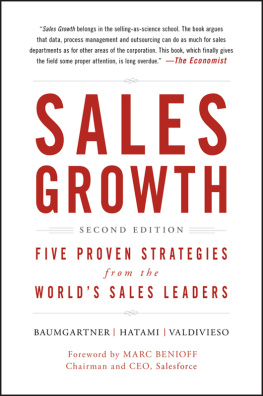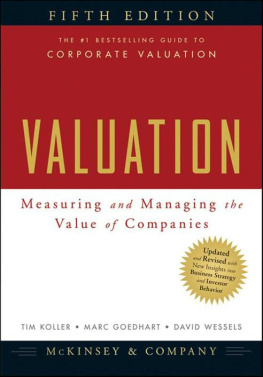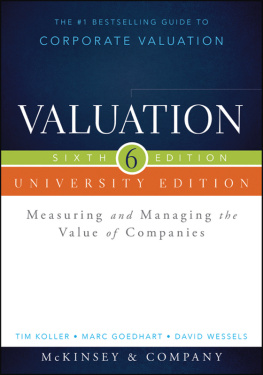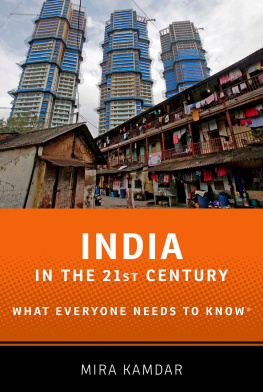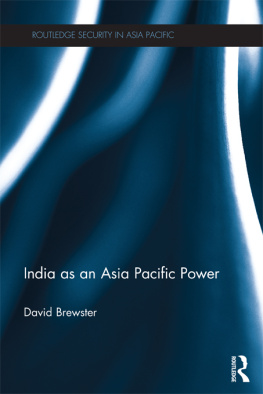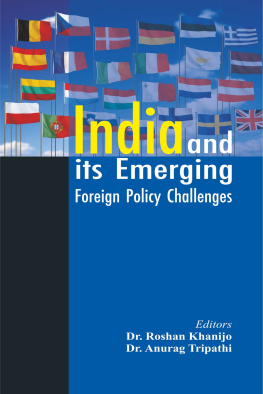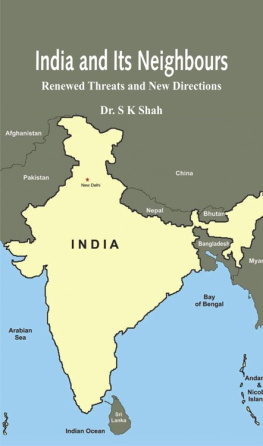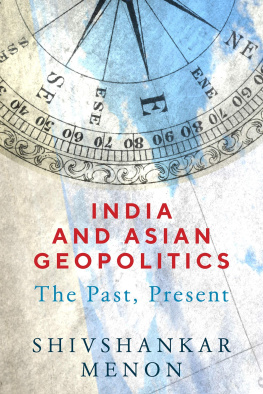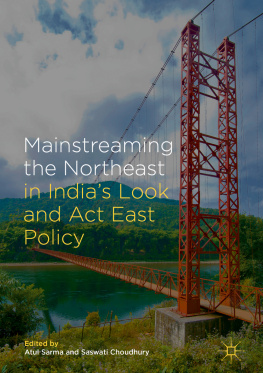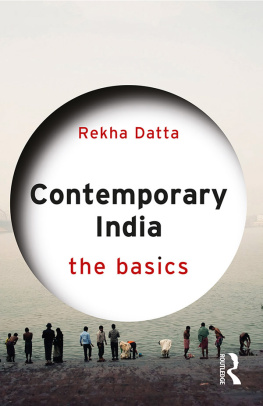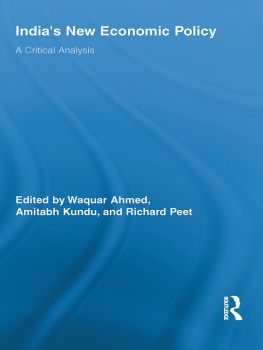Thank you for downloading this Simon & Schuster eBook.
Join our mailing list and get updates on new releases, deals, bonus content and other great books from Simon & Schuster.
C LICK H ERE T O S IGN U P
or visit us online to sign up at
eBookNews.SimonandSchuster.com
contents
The difference between what we do and what we are capable of doing would suffice to solve most of the worlds problems.
Mahatma Gandhi
foreword
Dominic Barton and Noshir Kaka
By the time Alexander the Great reached the Indus River Valley in 326 BCE, he had vanquished three formidable empires: Syria, Egypt, and Persia. But on a rainswept night on the banks of the Jhelum, an Indus tributary, the Macedonian conquerors quest for global domination collapsed at the hands of a Hindu king. Greek historians called Alexanders Indian foe Porus. According to their record, he stood seven feet tall and commanded an army of thirty thousand soldiers and two hundred war elephants. After an all-night battle waged in a howling monsoon, Alexander eventually forced Porus to surrender. But it was a hollow triumph. By Indian standards, Porus was a minor raja. The Magadha emperor, who ruled the lower Ganges River to the east, had many times more men and elephants. Alexanders men, exhausted and terrified by the prospect of battling another giant Indian army, mutinied, compelling Alexander, the most successful military commander in ancient history, to turn back home.
Modern visitors, too, can find India overwhelming. Passengers disembarking at Indira Gandhi International Airports gleaming new third terminal are greeted by the Nine Mudras, an installation of colossal metallic hands looming above the Immigration counter. The hands, according to their designers, are arranged in delicate gestures from yoga and Indian classical dance to symbolize reassurance, benevolence, the oncoming of novel tidings, and the linkage between the individual... and the ever-throbbing life force of the universe. Travelers proceed under the Mudras, through baggage claim and customs, along the air-conditioned arrival hall adorned with posters celebrating Incredible India and then out onto the curbside, where they are plunged headlong into ever-throbbing lifeand plenty of it.
An abundance of lifevibrant, chaotic, and tumultuoushas long been Indias foremost asset. As Western economies struggle to recover from global recession, Indias multitudes earn it a place alongside China as one of the worlds two indispensable emerging markets. India, with 1.2 billion people, half of them under the age of twenty-five, is expected to overtake China as the worlds most populous nation before 2025. In good years, Indias sprawling economy has shown itself capable of growing as rapidly as Chinas; in 2006 and 2007, Indian GDP surged 8.5 percent. In 2012, according to the Organisation of Economic Cooperation and Development, India likely eclipsed Japan as the worlds third-largest economy.
Asias other superpower has many strengths. Indian business leaders, unlike their Chinese counterparts, are at ease in global markets; many, if not most, are fluent in English and graduates of leading business schools in the United States and Europe. With increasing confidence, CEOs of Indias leading companies are venturing overseas, making headlines with high-profile acquisitions such as Tata Groups purchase of Jaguar and Land Rover or Bharti Airtels acquisition of Zains African telecommunications business. Indian software giants like TCS, Wipro, and Infosys have emerged as global technology leaders, thanks partly to the skills of the thousands of world-class engineers who graduate each year from the countrys famed Indian Institutes of Technology. Indian companies are thriving in other key sectors such as pharmaceuticals, petrochemicals, and steel, demonstrating a capacity for efficiency and innovation that is changing the global competitive landscape. Indias banking system and equity markets are well regulated and far more open to foreign participation than Chinas. Indias currency, unlike Chinas, trades freely. It is often argued that India, with its wildly pluralistic society, fractious democratic political system, and boisterous independent media, has the potential to show the worlds other emerging markets that ethnic homogeneity and authoritarianism arent the onlyor even the bestpath to successful economic development.
But there it is, that word potential; it crops up all too often in conversations about India. As consultants we hear it again and again, from business executives, government officials, and opinion leaders inside and outside India. Today, almost seventy years since shaking off the yoke of British imperialism, India is reclaiming its historical prominence in the world economy. It has congratulated itself for rising and shiningbut is it doing so as quickly or as brightly as it should?
As Reimagining India goes to print, there is growing anxiety, fueled by a severe market downturn, that the burst of economic liberation of the 1990s and the decade of rapid growth that followed have given way to deadlock and complacency. Manmohan Singh, the celebrated architect of the 1990 reforms and now Indias prime minister, has vowed to take all possible steps and do whatever is necessary to curb government spending and stabilize the economy. But the questions linger: What steps are possible for India? What is the nations true potential? And what can be done to unlock it?
This book is an effort to encourage discussion and debate about those questions. Reimagining India follows the spirit and format of Reimagining Japan , a McKinsey-edited essay collection published in the wake of the triple disasters of earthquake, tsunami, and nuclear crisis that struck Japan in 2011. As with the Japan book, we have sought wisdom from many dimensions, social and cultural as well as economic and political. We have solicited essays from Indias leading business executives, CEOs of some of the worlds largest multinationals, economists, investors, entrepreneurs, scholars, journalists, artists, and athletes. Readers will, of course, find essays here on the strengths and weaknesses of Indias political system; growth prospects for Indias economy; the competitiveness of Indian firms; and Indian foreign policy. Other contributions explore how India might harness the power of new technologies, improve its infrastructure, expand access to health care, revamp its educational system, rethink its energy strategy, and halt destruction of its environment. But there are also essays on softer topics such as Bollywood, cricket, Indian cuisine, chess, classical dance, and Indias bid for a stronger performance in the Olympics. The result, we think, is a collection of ideas and expertise without parallel in any other volume.
These are independent voices. McKinsey made no effort to censor or influence the views of any contributors other than to press them to express their ideas as sharply and clearly as possible. While McKinsey consultants have contributed a few essays to this volume, Reimagining India is not the product of a McKinsey study; neither is it meant as a white paper nor coherent set of policy proposals. Rather, our aim was to create a platform for others to engage in an open, free-wheeling debate about Indias future.
No vision for Indias future can be complete without an awareness of Indias extraordinary past. The subcontinent was home to some of the most sophisticated early human civilizations. Critics of Indias modern infrastructure would do well to recall that inhabitants of Mohenjo-Daro and Rakhigarhi built the worlds first-known urban sanitation systems five thousand years ago and may have been the first to use wheeled transport. For centuries after Alexanders departure, India was governed by powerful Hindu dynasties who patronized the arts and took keen interest in religion, philosophy, and practical science. Megasthenes, the first Western historian to venture beyond the Punjab into the Gangetic plain, described a land so verdant and fertile that famine has never visited India and there has never been a general scarcity in the supply of nourishing food. Venetian traveler Marco Polo, who claimed to have visited several ports in India during his 1292 voyage from China to Persia, declared Malabar (now Kerala) on Indias southwest coast to be the richest and most splendid province in the world.


